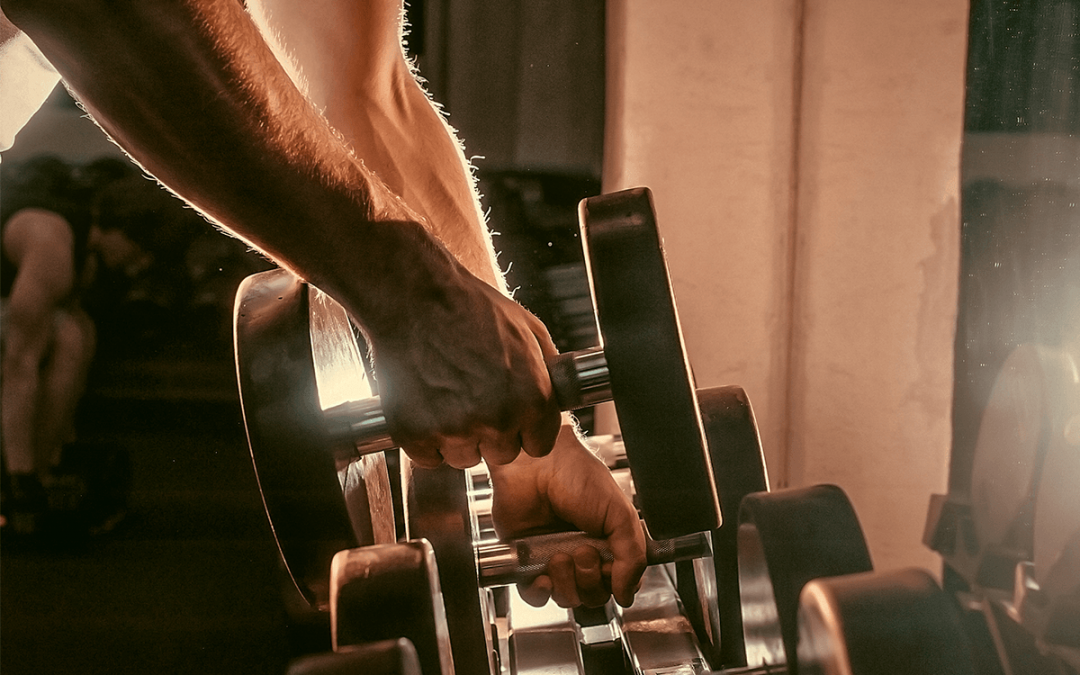To do the chest supported row, you just need a pair of dumbbells and a bench. Although its name calls out the chest, it’s really a movement used to target the shoulders and the back.
By supporting the front of your body against the bench, this type of row removes the need for back and core stability, allowing you to row with better form.
If you’re eager to develop your back and shoulder strength, then you’ll want to read on.
Are you an employer? Hussle now offer flexible, discounted access to our fitness venues as an employee benefit. Elevate employee wellbeing.
What is a chest supported row?
The row is a widely used compound exercise. It involves a few different joints that move across an extensive range of motion. As a result, it recruits many muscles from around the body, making it really effective for developing upper-body strength and endurance.
A chest supported dumbbell row is an effective variation. As the name suggests, it’s a row where your chest is supported. By leaning into a bench with your upper torso, you’re removing the need for your back to stabilise the movement. Unlike other rows like the bent-over row, your lower back and hamstrings aren’t recruited to stabilise the movement.
By removing the need for other muscles to stabilise the body throughout the movement, this row is much more effective for targeting the back muscles. They’re sure to get fatigued and help you to build muscle in this area.
What are the benefits of a chest supported row?
The well-known bent over row is popular for a good reason. It requires you to engage your whole body to perform it unsupported. Bent over rows can be really difficult, especially with heavy weights. Hinging at the hips and forming a tabletop position with your back, you pull the dumbbells up towards your hips.
With the bent-over row, form often fails first. The upper back becomes rounded as the chest and core struggle to stabilise the movement. Instead of the targeted muscles reaching fatigue, it’s other stabiliser muscles that need rest first. This is the same as many major lifts you do in the gym. That’s why they’re effective at developing strength and muscle in many muscle groups across the body.
By using the incline bench to lean into, you create a supported dumbbell row. You’re no longer asking your lower back, core, or legs to stabilise you. Doing this allows you to better target the muscles in the upper back. There’s nothing to fatigue first and stop you from doing more reps before your back muscles are ready.
It also lets you focus on your form, meaning no more rocking motion causing stress for the lower back. It will allow you to lift without the load on your spine becoming a problem and avoid injury.
The chest supported row also lets you lift heavier because you remove the involvement of weaker muscles. So, if your goal is to increase your pure strength in target muscles, it’s a great option.
It’s also an exercise that helps improve your overall posture, as it improves muscular endurance, helping you keep your shoulders back.
What muscles does the chest supported row work?
In particular, the chest supported row works the:
- Latissimus dorsi
- Trapezius
- Rhomboids
- Biceps
Essentially, all the major muscle groups in the back and those in the arms too.
How do you perform the chest supported row?
Also sometimes called the dumbbell incline row, the chest supported row uses an incline bench for the movement.
1. Set up an incline bench. You’re looking for a 30-45 degree angle.
2. Face the bench and rest your chest and torso onto it, keeping your feet flat on the floor so that your body is straight.
3. Hold the dumbbells in each hand, your arms straight down towards the floor.
4. Pull the dumbbells up so that your arms form a 90-degree angle.
5. Pause at the top and squeeze your shoulder blades.
6. Lower back down in a controlled motion to the starting point.
To help build strength, aim for 4 sets of 5-8 reps using heavy dumbbells. You can also train unilaterally, working one side at a time.
There are a couple of form tips to make sure you’re getting it right. At the top of the row, the dumbbells should be aligned with your hips. Keep your chest on the bench and your neck and spine aligned. Your face should be above the end of the bench, not smushed into it.
What other types of row are there?
Rows are an essential part of any upper body or back day. By including variations in your routine, you can switch up the focal muscle fibres and develop well-rounded strength. Whilst the chest supported dumbbell row is a great one for isolating specific muscles, the unsupported versions still have a place in your routine to help you engage your core and other key muscle groups.
There are plenty more versions to try too:
Rack rows:
A tough barbell based row that focuses more on the lats.
Inverted rows:
A good one for beginners to get going with.
Seated cable rows:
Uses a piece of gym machinery and helps remove the load from your lower back.
Standing cable rows:
Uses the cables but is performed standing and requires more stabilisation.
Meadow rows:
A more obscure row that uses the landmine to perform a unilateral version of the exercise.
Whichever variation works for you, supported or unsupported, dumbbell or barbell, standing or seated, rows are an effective way to work the back.
If you’re ready to get in a gym and give them a go, Hussle gives you access to a gym in whatever way you want it.



